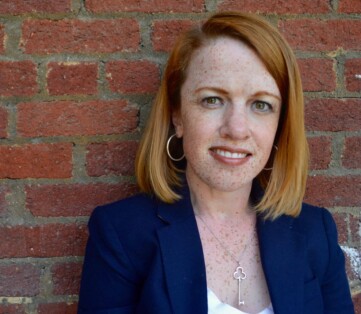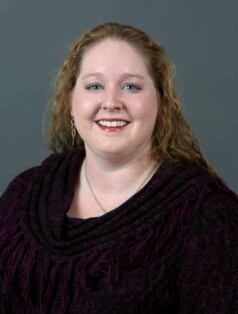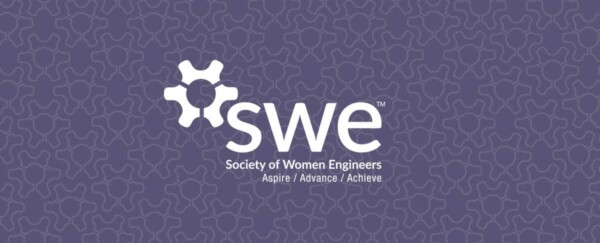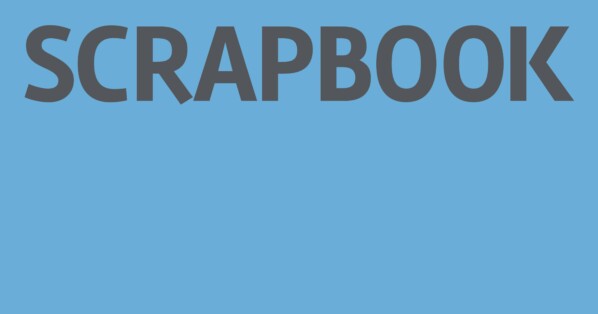Experts say they can see both potential upsides and downsides to workplace policies put into practice in the wake of the coronavirus pandemic. Lessons from this experience could help advance greater accessibility, if properly applied and expanded upon. Yet disability activist and leader Rebecca Cokley said she wouldn’t count on “this sudden awakening” of employers to flexible work arrangements. Indeed, she is concerned that employers will perceive telework and interactive technologies as a way to avoid complying with the Americans with Disabilities Act and the Architectural Barriers Act after the coronavirus crisis ends.
“We cannot have a whole generation of employers who justify an inaccessible workplace with, ‘Well, you can just telework,’” Cokley, director of the Disability Justice Initiative at the Center for American Progress working on disability policy, said in an email interview.
Though telework is a best practice, Cokley said there’s a “real fear” that employers can say, “Well, it’s cheaper to be in an older building with stairs and no elevator, so maybe Sally can just telework like she did during the pandemic.”
She hopes — but isn’t holding her breath — that major employers “publicly recognize lessons learned from this experience.”
“It’s going to require us to be more flexible about what we think of when we use the word ‘collaboration,’ and how we collaborate in the workplace,” said Cokley, who served as President Obama’s director of priority placement for public engagement in the Presidential Personnel Office at the White House, among other roles. As director, she was responsible for outreach to diversity and minority organizations to recruit professionals to the administration.

“Disabled people are used to not having our needs met and having to develop strategies to engage, even at times [when] the structures or protocols are not in place to make that engagement easy,” said Cokley, who was born with achondroplasia, a common cause of dwarfism.
If true change in the space of disability employment is to be a result of this time, Cokley said she thinks “executive-level leadership really needs to expand their commitment around diversity, inclusion, and equity to be inclusive of people with disabilities, and not just white men in wheelchairs — but [also] people with food allergies, chronic illnesses, and people with mental illness.”
“The reality is that they already have employees with disabilities on their staff, but if they are unaware of their needs and priorities within an organization, but can lay out the needs of other marginalized communities, it likely means that disabled employees are not being heard.
“It will also mean for many of us, having a real frank conversation about work/life balance and the tendency of media and society to center caregiving demands largely on women (I say this as my three kids are chasing each other with hockey sticks around my living room),” Cokley said in the email.
“I hope we will see an increased value placed on the importance and need to invest in the domestic workforce,” she said.
Even more importantly, workplaces need more top executives who live outside the nondisabled world, she said. “When organizations have ‘out’ people with disabilities and chronic illnesses in leadership, folks feel safe taking leadership steps in times like this,” Cokley said. “You don’t feel like your requests would be doubted or perceived as asking for ‘special’ treatment.”
LISTENING TO MORE VOICES
A potential “silver lining” amid the coronavirus pandemic is that companies and technologists may well step up their innovations because they must, said Jennifer Boger, Ph.D., P.Eng., an assistant professor of systems design engineering at the University of Waterloo in Ontario, Canada, and director of the Intelligent Technologies for Wellness and Independent Living Lab.

“Now that it’s [everyone, including the top executives and tech leaders] who have to figure out a way to work in new ways, anything is possible,” said Dr. Boger, who is also the Schlegel Chair in Technology for Independent Living at the charitable foundation Research Institute for Aging.
“If [the pandemic] lasts for more than a couple months, there will be so many more ways that will spring up to support remote working, and hopefully more options arise for people of different abilities,” she said.
Indeed, the crisis may prove to be our generation’s “space race” — akin to the United States’ race to land a man on the moon in the 1960s, said Dr. Boger, who earned her undergraduate degree in biological engineering, her master’s degree in biomedical engineering, and her Ph.D. in health sciences.
“The space race is the classic example. People had a common goal. They pulled together. The technical advances benefited so many people,” she noted. “[The coronavirus pandemic] is global. It’s going to cut across cultures, business sectors, and everything. There are so many social scientists clapping their hands in glee. What an unbelievable opportunity to study our social relationships and how we can use technology to support them. It’s almost like we’re all simulating a bit of a restriction, a disability — in this case, mobility — on what we can and are allowed to do. Technology will play a massive role. It’s the go-to.”
Yet, at the same time, technology is very personal. “What works for one person doesn’t work for another — and that’s OK,” Dr. Boger said. “Not everyone listens to the same style of music or wears the same kinds of clothes. What one person can use, another person can’t. It’s not a one-size-fits- all, but we should make efforts to accommodate as many people as possible.”
That’s where the idea of ethics by design comes in. The key question, Dr. Boger said, is “how do we bake ethics and responsible design into the process, rather than as an afterthought?” Her work considers ethical questions, ranging from privacy rights to informed consent to how sensor data are used.
More work remains to motivate technology developers to ask the tough questions and engage in ethical discussions before they plunge ahead in their work. Illustrating this need is a project that embeds ambient sensors running 24/7 with an artificial-intelligence-configured backbone into everyday household objects such as the floor, lamps, chairs, and doors. Such a configuration could help people with dementia by alerting their in-home caregivers that they’re trying to leave the house unaccompanied, for example.
“The idea is not that we sneak it in there,” Dr. Boger said. “But people don’t want big cameras or obvious things in their homes. We like our homes to look how we want, not covered in sensors.”
“It’s also about the stigma,” she said. “For example, having a visible sensor or device for monitoring health reminds people all the time that they’re ill. People aren’t keen on being told, ‘You’re sick,’ all the time.”
The third consideration is that many people with chronic conditions fail to comply with medical instructions because they can be difficult, exhausting, and unwieldy. “We’re trying to make tech subtle, so that it doesn’t take effort, and so that it monitors several times a day, rather than at a single point in time, so it’s more likely to capture more natural signs. It’s more likely to be accurate.”
Such “always-on” technology raises ethical questions, including:
• What if a person with dementia, living in an invisibly monitored home, invites friends over and they haven’t consented to being monitored?
• What if the person with dementia consented to being monitored yesterday but not today? Whose autonomy is more important, the person with dementia or the caregiver’s?
“There’s no generalization. It’s complicated,” Dr. Boger said. “It requires conversation among multiple stakeholders. It requires articulating complex notions to the people building the technology so they, too, can ask questions.”

Becca Monteleone, a disability studies scholar who worked in spring 2019 as a Christine Mirzayan Science and Technology Policy Graduate fellow at the Center for Engineering Ethics and Society, and Meghan Donahue, a Ph.D. student in human factors industrial and systems engineering at the University at Buffalo, The State University of New York, said in separate interviews that
they enjoy their work because they get to make one-on-one decisions to empower people in unique ways.
Monteleone said she considers the work to be empowering because it creates new avenues for people’s voices to be heard. More important is the need for systemic change — reframing the conversation around disability, she said.
“In the case of disability, we have for hundreds of years made the worst assumptions, so it’s time to start reframing how we think about an ‘ideal person,’” said Monteleone, a Ph.D. candidate at Arizona State University’s School for the Future of Innovation in Society.
“We need more voices of people with disabilities as part of these dialogues,” she added. “It’s this idea of how do we resist old narratives such as only employing people because we feel sorry for them or assume they can only do piecework.
“In terms of actual workspaces, it’s about changing the way we do work practices so people don’t necessarily have to request accommodations. Flexibility and customizability should just be part of the work landscape.”

Donahue said inroads are being made toward such an ideal workplace or place of study. Solutions may be as inexpensive as an ergonomic assessment of how a worker with low-back pain sits at his or her workstation, encouraging them to move around and to use a chair that rocks when leaning back to allow for small back-muscle movements, Donahue said.
Yet employers rarely put such accommodations at the forefront. Donahue spent six years helping people with all types of disabilities customize how they interacted with their jobs by using technology, modifications, various strategies, and sometimes custom-fabricated equipment. Such equipment, for example, a keyguard to help someone isolate keys on the keyboard, are now easily available on e-commerce websites. Tools embedded in tablets and smartphones also let people use their assistive technology discreetly.
Donahue recommends tools such as a task timer for university students with autism or attention deficit hyperactivity disorder who benefit by being reminded to move ahead if they get stuck on a homework problem.
When someone is trying to stop a bad habit and replace it with a more beneficial one, gaming avatars can help. Adhering to a schedule or regimen earns or unlocks points, while reverting to the bad habit takes points away, Donahue said.
MAKING ETHICS CENTRAL TO DESIGN
Now, the big challenge is how can industry reconfigure its processes — essentially, “turn the Titanic” — to ensure the same kind of advanced, empathetic, and innate considerations within their enormous and enormously complicated systems?
Dr. Boger and two colleagues, Maurice Mulvenna, Ph.D., and Raymond Bond, Ph.D., both with the School of Computing and Mathematics at Ulster University in the U.K., have written a manifesto titled “Ethical by Design.”
“We’re trying to figure a way to support responsible innovation that’s generalizable enough so that it’s applicable to tech development without being so restrictive that it’s meaningless,” Dr. Boger said. “It’s pushing toward a culture change and a change of mentality around the way we do tech development.”
They’re revising the manifesto now.
Their rationale started because they realized there was no clear approach across disciplines. “While most agree that ethics in design is crucial, there is little effective guidance that enables a broader approach to help guide and signpost people when developing or considering solutions, regardless of the area, market, their own expertise, etc.,” the manifesto states.
One incentive could well be financial, but it will require convincing tech leaders that the beginning processes will take longer. “If you do more responsible tech, you’re poised to make more money,” Dr. Boger said. “The product won’t violate people’s values, and your chances of getting sued go down.”
“But things have to slow down for a bit until everyone gets used to the new normal,” she said. “It takes commitment and time to make this shift. That’s a big commitment.”
Companies are starting to open up to the idea, partly because they already use Agile development, in which tech teams work together to ask questions upfront and aim to solve customer problems while they’re designing products. “This has a chance,” Dr. Boger said. “Many companies are opening back up again to different ideas of what an employee can do.”
Even IT developers are proposing changes as they contemplate their futures while sitting at home, trying to wall themselves off from daily household commotions.
One is Charlie Dawson, the channel director at London-based graphics application company IMSCAD Global, who wrote a manifesto of sorts of his own to companies in a coronavirus world.
The key for businesses is to start customizing solutions — perhaps some employees need only enough bandwidth for email and Word documents, while others require complex IT setups, Dawson said.
His purpose: Get companies to start realizing how flexible, nimble, and customizable their functions can be. “A VPN (virtual private network) or RDP (remote desktop protocol) type remote working setup can be a relatively quick and cost-effective way of letting your employees work from home,” he said.
For more resource-hungry applications, computer-aided-design-type applications and the whole family at home trying to access what they need, the answer might be virtualization software, for example, Citrix, VMware, or Teradici PCoIP.
“The big advantage of this is your data remains on domain and you retain control,” Dawson said. “The disadvantage is a considerable upfront cost, and it can take a while to take delivery of hardware, particularly at the moment, since everyone is in the same boat after all.”
Another option, a Desktop as a Service, DaaS, sits somewhere between the two, with servers ensuring optimum performance for various workloads but hosted in the cloud, he noted. “The idea is for companies not to just soldier on with solutions that don’t work,” Dawson said. “That will just hurt people in the long run.”

Mark Abbott, P.Eng., managing director of the Engineering Change Lab in Toronto, points to the book Engineers for Change, by Matthew Wisnioski, Ph.D., as a touchstone for thinking about how evolutionary changes get started. He compares today’s “socio-technologists,” who are challenging engineers to rethink and remake their profession, to the 1960s- and 1970s-era anti-war and environmentalism protestors who fought the establishment.
The book explains how, in the late 1960s, an eclectic group of engineers joined the anti-war and civil rights activists of the time in agitating for change, challenging the professional elite to see that technology’s negative consequences can result from failing to critically question the processes themselves.
Abbott says he believes today’s engineers can similarly “start to change the fundamental structures and systems of engineering.” The way to do that, he said, is to knit together the kindred, yet disparate, movements already underway, including:
• International Network of Engineers and Scientists for Global Responsibility, a nonprofit concerned about science and technology’s impact on society.
• University courses that incorporate value-sensitive design as well as science and technology studies (STS). One example is Donna Riley, Ph.D., Kamyar Haghighi Head of the School of Engineering Education at Purdue University, who focuses on STS as a framework for understanding how engineering affects society in a social and political way.
Dr. Riley, a former program director at the National Science Foundation who redesigned the Research in the Formation of Engineers and the Research Initiation in Engineering Formation programs, has published two books: Engineering and Social Justice and Engineering Thermodynamics and 21st Century Energy Problems.
Another example is Concordia University in Canada, which incorporates STS teaching and, in some classes, asks engineering students questions that a social scientist would ask about their designs.
• Doteveryone is a U.K.-based initiative to teach businesses how to build technology that supports the best interests of people, communities, and the planet, and helps policymakers set the terms for technology that’s “better for everyone.”
• The Engineering Change Lab, which Abbott founded five years ago, has hosted 15 workshops that ask engineers, deans, students, professors, industry leaders, professional groups, and others: How can they unlock the higher potential of engineering to contribute to society?
“We convene a microcosm of the system we’re trying to change,” said Abbott, who spent 15 years in consulting engineering before volunteering with and becoming part of the leadership team of Engineers Without Borders.
So far, 150 people and 130 organizations have participated in the workshops — and they’re divided on whether today’s technological stewardship will lead the world to a future much like “Star Trek” or as envisioned in the movie “Terminator,” he said.
Abbott maintains a glimmer of hope.
“We have everything we need to become more responsible stewards,” he said. “It’s our intentional activity that makes the world more beneficial for all.”
“Toward More Accessible Work Environments” was written by Sandra Guy, SWE Contributor. This article appears in the 2020 spring issue of SWE Magazine.
Read more from the 2020 spring issue of SWE Magazine:
- Feature: Engineering for Good
- Feature: Inclusive Design for Living Longer
- Feature: Women Engineers You Should Know
- SWE Forum: From Congressional Visits to the “New Normal” Brought by COVID-19
- Opening Thoughts: Access: A Matter of Human Rights
- News & Advocacy: COVID-19: STEM Strikes Back
- News & Advocacy: Momentum, Authenticity, and Pivoting: The State of Women in Politics
- News & Advocacy: Visiting Congress During a Global Health Crisis
- News & Advocacy: People
- Career Pathways: Shelter-at-Home Orders Put Spotlight on Disability Accommodations
- President’s Note: Joy and Relevance in the SWE Mission
- Life and Work: Is Sitting the New Smoking?
- Reinvention: From Fixing up My Home to Helping Others Construct Theirs
- Media: Invisible Women: Exposing Data Bias in a World Designed for Men
- Viewpoint: Then and Now: Personal Reflections on Accessibility
- In Memoriam: Marta Kindya, 1946-2019
- Closing Thoughts: Community in Times of Crisis
- Scrapbook: Announcing a New Arrival







